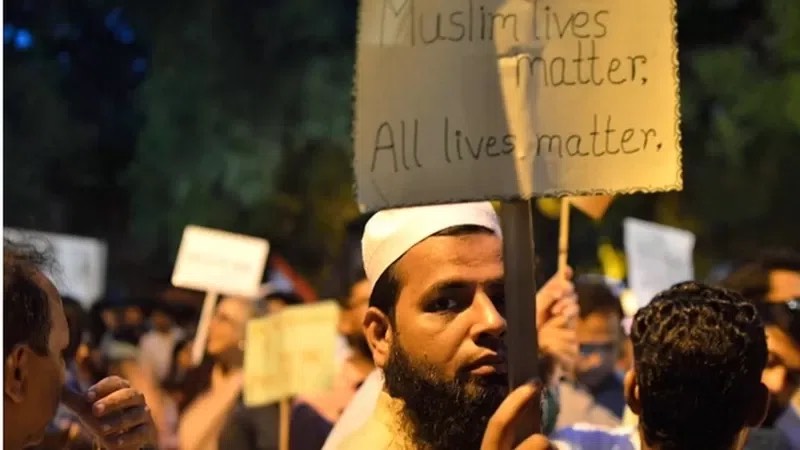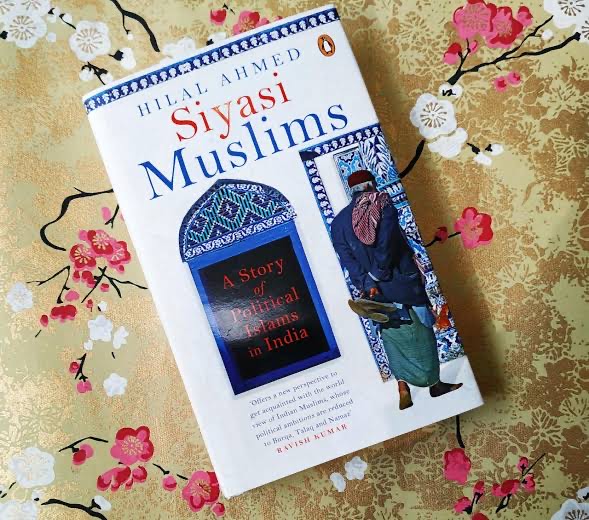
By Haris Rashid
IN his book Siyasi Muslims: A story of Political Islams in India, 2019, Hilal Ahmed analyses the Muslim politics in India through contemporary debates. The first thing that the book does is that it challenges the homogeneity of Indian Muslims. As a result, it achieves separation of “Muslim” and “Islam”. Islam is not a living organism that acts on its own but it is the Muslims that act. Therefore, the subject of the book is Indian Muslims not Islam per se. The debate on Burqa that the author analyses highlights the fact that it is the Muslims that act and not Islam. The debate on triple Talaq also points to the fact that when analysing the politics of Muslims, it is the Muslims that should be studied and not Islam. Similarly, the casteism that Muslims in India practice or perpetuate despite the egalitarian nature of Islam also highlights this point.
Hilal Ahmed argues against homogenizing of Indian Musims by looking for the sources of identity of Muslims in the census started by the British. He argues that the census categorized all Muslims, irrespective of the schools of thought they adhere to or their caste or class, in one category and reduced them to numbers. This reduction to numbers is the reason provided by him for the homogenisation of Indian Muslims. Since all Muslims belong to the religion of Islam, it might have been convenient for the purpose of census to consider them as one category. In this context, the explanation provided by the author begs the questions- what would have been the alternative to this? As the author introduces the reader to the different castes, classes and schools of thought that the Muslims adhere to, should the census adopt a caste based, class based or the school of thought based approach? Interestingly, the author does not even once mention the first schism in Islam- the Shia-Sunni divide. Irrespective of the line of this argument, the author however drives the point home that Indian Muslims are not a homogenous category.

Since Indian Muslims are not homogenous, they have different approaches to similar Muslim issues. Therefore, no single organization can claim to be representative of the entire Indian Muslim population. All India Muslim Personal Law Board (AIMPLB) might be one of the well known organizations but there are a plethora of other Muslim organizations that contest over similar Muslim issues. Irrespective of these plethora organizations contesting over Muslim issues, the author argues that these issues are treated by the government and the political parties keeping in mind that Muslims are a homogenous group. As a result, only some of the Muslims, mostly AIMPLB as the government and the courts give priority to it, are represented. The voices and concerns of other Muslim groups are not considered. Similarly, there are other issues, including legal and constitutional, over which internal politics takes place among Muslims. Some elite Muslims want reservation for all the Muslims while others belonging to the lower castes want reservation for Dalit Muslims only and some want separate reservations for Dalit Muslims and other Muslims. Therefore, there is no consensus on these Muslim issues among various Muslim groups in India. However, most of the Muslims invoke the constitution and speak the language of rights when faced with these issues.
Given that Muslims are not a homogenous group and they are not represented by a single organization, Ahmed goes on to explain their nature of participation and interaction with the politics of the country. He counters the argument that Muslims are only concerned with Muslim issues and beyond that they are not concerned about anything. Providing quantitative evidence, he argues that Muslims are equally concerned about poverty, unemployment and other common governance issues that other socio-religious communities also face. Giving the example of Babri Masjid, he argues that it is not the most important issue for most of Muslims in India and it does not figure as an electoral issue for Muslims. The reaction to Triple Talaq or the abolition of Hajj subsidy also highlights the point that Muslims are concerned about politics beyond these Mulims issues. In this context, Ahmed rebuts the accusations that Muslims are concerned only with their Muslim identity and further goes on to argue that they do not form a “vote bank” of any party. He argues that Muslims show different voting patterns in different elections. Sometimes they vote for Indian National Congress (INC) while other times they vote for Bhartiya Janata Party (BJP). The example of fatwas issued by Imam of Jamia Masjid Delhi asking people to vote for different parties in different elections is given to highlight the point that Muslims do not vote for any single party. However, Muslims, like any other community, do form voting blocs at the local constituency level in the best of their interests and there is no exception about it. Therefore, at the national level, Musims do not vote collectively for a particular party. The Muslim vote bank is an imagination of secular parties who treat Muslims as a homogenous social group and make promises to Muslims using the minority status of Muslims in India. However, it misses the point that Muslims are not a homogenous group and everyone among them is not concerned with the package of Muslim issues.
The notion of Musim appeasment — that secular parties appease Muslims by promising the Muslim issue package is also dealt with in detail in the book. Muslims are recognized as a minority by the constitution and hence non-BJP parties make a plethora of promises to Muslims on Muslim issues using the “minority” character of the community. These issues include minority status of educational institutes like Jamia Milia Islamia and Aligarh Muslim University and the OBC reservation for Muslms. Ahmed argues that these promises and work done for Muslims cannot be called appeasement as these parties making promises or doing work for Muslims consider Muslims to be a homogenous group. Only a few sections of dominant Muslims benefit from what is called Muslim appeasment. Further, Sachar Committee report on the socio-economic condition of Muslims in India is invoked to refute that anything done for Muslims as a community is appeasement. Some of the parties like BJP who oppose Muslim appeasment have token representation of good Muslims in their party so as to reach out to Muslims for votes while at the same time asking them to vote as Indians and not as Muslims.
Since the book analyses the contemporary Muslim issues in India, it also deals with the Hindutva politics and tries to situate Muslims in it. The author argues that Hindutva needs Muslims to survive as they create Muslims as a permanent “other”. Hindutva considers Muslims as foreigners and converts in the sense that Islam came from outisde with the invaders and then some Hindus also converted to Islam. “Indianization of Muslims” is considered a panacea by Hindutva to all the problems that Muslims in India face. It can be said that the “Muslim” and the “Indian” identities are considered mutually exclusive by Hindutva idealogues. Since Muslims do worship facing Kaaba or follow non-Indian prophets and Muslim personal law, it is alleged that their allegiance lies outside India.
While Hindutva has historically used anti-Muslim rhetoric to target Indian Muslims, the ideology of Hindutva is not fixed to Savarkar or Golwalkar. There is no discussion on how the identity of Muslims have been shaped in the wake of partition in 1947 or the Kashmir issue. The word “separation” or “separatist” is used many times throughout the book but it is not elaborated as to why Muslims are accused of separatist tendencies. Further, the reaction of Muslims to Hindutva is also not discussed. Since it is argued that Muslims think like any other socio-religious group and are not just concerned about their Muslim identity, they do not react to these religious issues and maintain “Muslim silence”.
It is interesting that Ahmed argues how Muslims are a heterogenous group that are different based on class, caste, gender and the schools of thought they belong to. It brings out how all these different identities combine to create different modes of discrimination and privilige for Muslims. It is what is called “intersectionality”- which identifies multiple factors of advantages and disadvantages.
However, on the homogeneity of Muslims, it is not mentioned how the Pakistan movement affected this homogenous identity of Muslims. Since the Pakistan movement was based on the premise that Muslims are a nation, how it impacted or brought about the homogenization of Muslims has not been discussed. The impact of Hindutva on this identity is also not discussed. Since Hindutva interacts with Muslims based on their religion and considers them a homogenous group, the reaction from Muslims is expected to be on the lines of religion and as a homogenous community of Muslims.
One of the important points that the book misses is Muslim mobilization. There are political parties led by Muslims in India that claim to represent Muslims both at the state level and the national level. The book does not deal with such parties and only mentions the BJP and the secular parties. There is also no mention of how Muslims have reacted to Hindutva. Silence is not the only reaction by Muslims. There have been various forms of reactions, including armed mobilization by various Muslim groups like Students’ Islamic Movement of India (SIMI). In fact, the author discusses the Citizenship Amendment Act (CAA) but does not mention how Muslims mobilized against it.
Overall, the book does a great job at deconstructing the Muslim community of India and identifies their source of identity. Through the contemporary debates on Muslim issues in Indian politics, it places them in the historical context and clarifies the terms of the debate. Though he engages with the Muslim politics but also leaves a lot out of the book on this subject.
Views expressed in the article are the author’s own and do not necessarily represent the editorial stance of Kashmir Observer
- The author can be reached at [email protected]
Follow this link to join our WhatsApp group: Join Now
Be Part of Quality Journalism |
Quality journalism takes a lot of time, money and hard work to produce and despite all the hardships we still do it. Our reporters and editors are working overtime in Kashmir and beyond to cover what you care about, break big stories, and expose injustices that can change lives. Today more people are reading Kashmir Observer than ever, but only a handful are paying while advertising revenues are falling fast. |
| ACT NOW |
| MONTHLY | Rs 100 | |
| YEARLY | Rs 1000 | |
| LIFETIME | Rs 10000 | |













